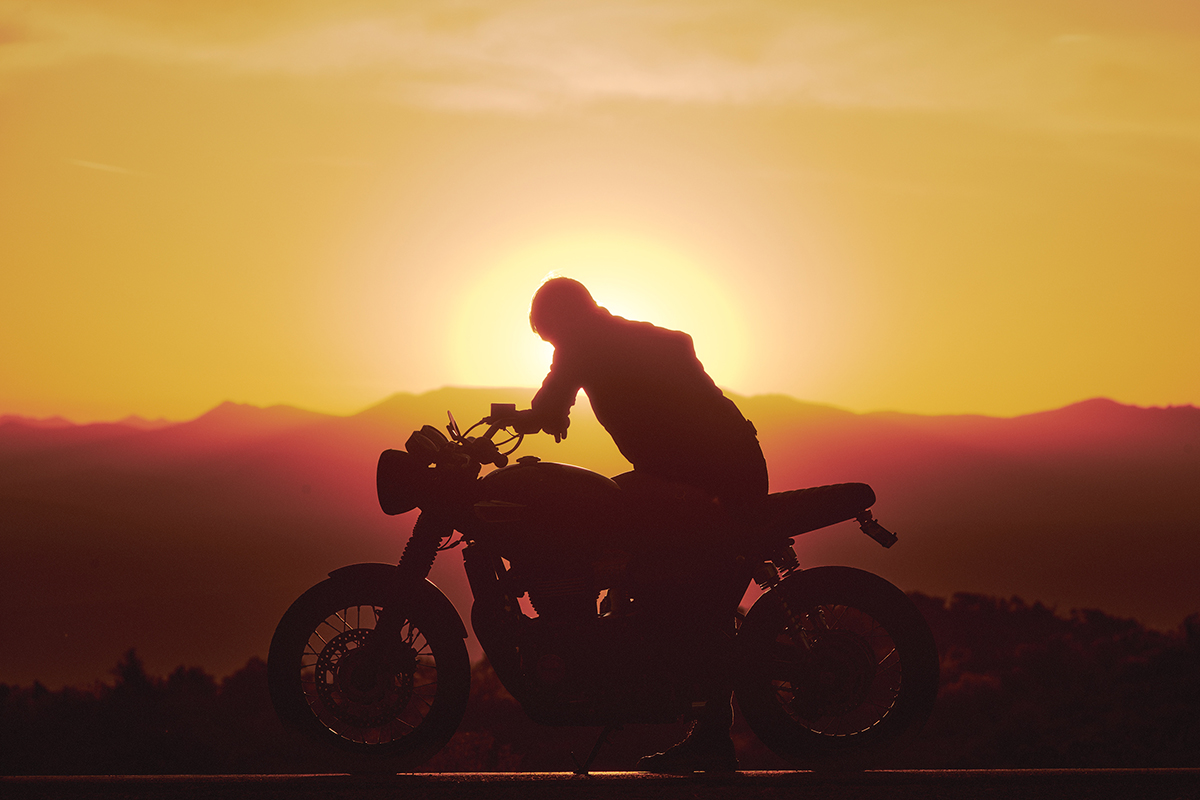The Bike Life
Kevin Pak offers an immersive experience in motorsports with his Tamron SP 70-200mm F2.8 VC G2 and SP 150-600mm VC G2 lenses.
Share the article:
More Photo Tips | Video Gallery | Photo Gallery | Enewsletter sign-up
By Jenn Gidman
Images by Kevin Pak
When Kevin Pak was growing up, he would play around with his dad’s film cameras when his dad wasn’t looking. “I was more fascinated with the mechanics of the camera than with actually taking pictures,” he says. He didn’t become officially ensconced in the photography world until years later, when as an adult he found himself in a content marketing role for British Customs, a company specializing in high-quality aftermarket parts for Triumph motorcycles.
“My first shoot combined everything I love—motorcycles, taking pictures, and being outdoors,” Kevin says. His work expanded into videography, and today, Kevin works as an advertising photographer and creative director in Torrance, California, outside of Los Angeles. Photographing motorsports remains a priority.
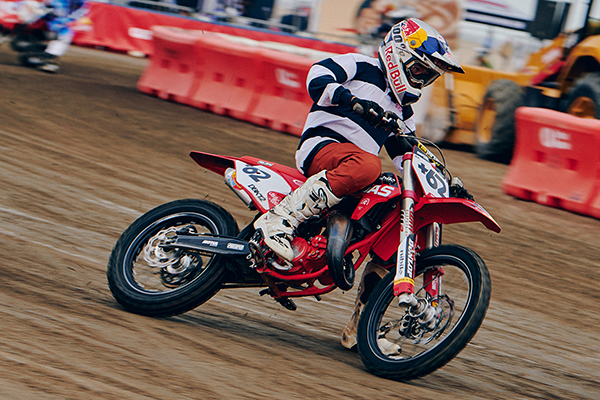
70-200mm (120mm), F5, 1/200 sec., ISO 125
Click image to view larger
“I draw a lot of inspiration from older movies, especially from the black-and-white era, like films by Akira Kurosawa and Masaki Kobayashi,” he says. “The absence of color in those movies makes me focus on how composition affects the overall mood. So when I’m shooting, I go for that more romantic, immersive feeling—I want the viewer to not only see the dirt flying, but also to almost hear the screaming of the exhaust and smell the gasoline.”
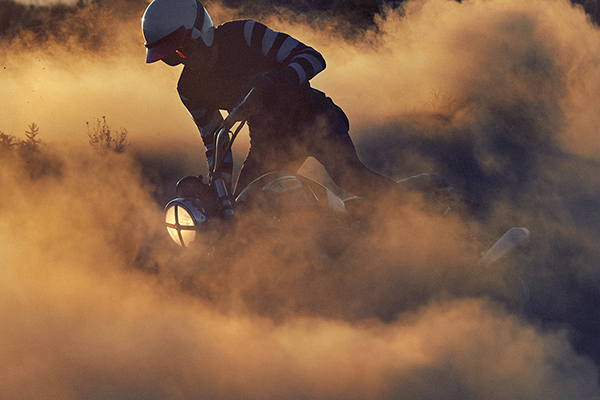
70-200mm (100mm), F3.5, 1/1600 sec., ISO 320
Click image to view larger
Whether he’s out in the California desert or photographing a motorcycle race on ice, Kevin has two Tamron lenses in his bag: the SP 70-200mm F/2.8 Di VC USD G2 telephoto and SP 150-600mm F/5-6.3 Di VC USD G2 ultra-telephoto. “The 70-200mm offers perfect versatility for what I’m trying to shoot, whether it’s of a rider ripping down a desert from far away, or a biker up close, with dirt everywhere,” he says. “The F2.8 maximum aperture is ideal when I’m shooting at the end of the day, which is my preference.”
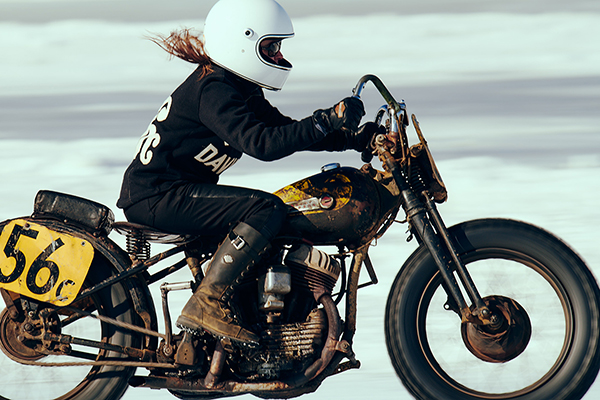
150-600mm (380mm), F5.1, 1/160 sec., ISO 64
Click image to view larger
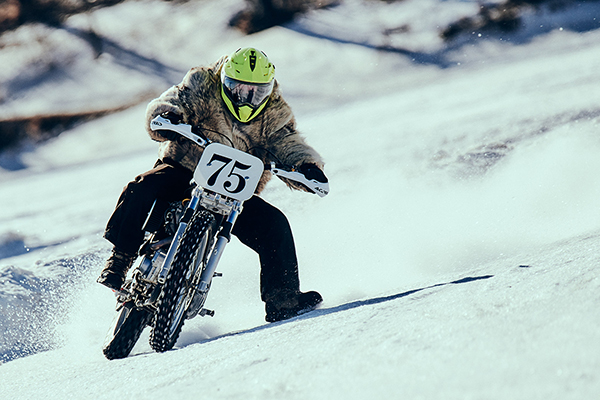
150-600mm (460mm), F6.3, 1/1000 sec., ISO 64
Click image to view larger
Meanwhile, the 150-600mm lens is vital when Kevin wants to keep his distance for safety reasons, or when he wants to zoom in on his subject’s face. “I call it focusing the chaos,” he says. “That chaos is usually manifested via motion blur or by the explosion of dust and dirt flying everywhere. I like to show the rider’s expression in the midst of all that so the viewer will wonder: What’s going through their mind?”
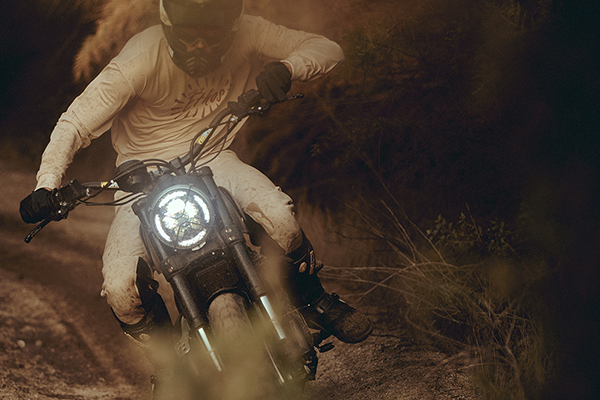
70-200mm (160mm), F2.8, 1/800 sec., ISO 400
Click image to view larger
The Vibration Compensation (VC) image stabilization feature on both lenses helps ensure sharp, jitter-free shooting, even in low-light situations, while their rugged build—including fluorine coatings and moisture- and dust-resistant construction—means Kevin doesn’t have to be concerned about how they’ll fare in such rough environments. “I was initially worried how these lenses would fare,” he says. “But they’ve held up wonderfully.”
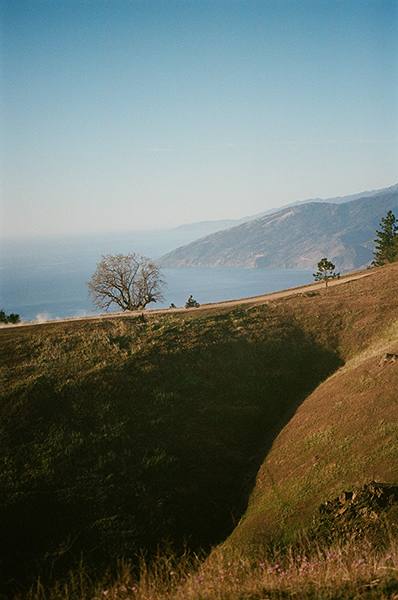
Click image to view larger
KEVIN’S QUICK TIPS
Become an expert on your lenses and focal lengths.
Learn which specific focal length is ideal for each image’s direction. Are you OK with distortion for a particular subject? Do you want separation between your subject and the background? What kind of color rendering do you want? A one-size-fits-all approach has never worked for me.
Learn your camera.
Those three words might seem so basic, but in a fast-moving sport like this, you don’t want to hesitate when taking a photo—the light can change in a millisecond, or a rider can move out of frame. By learning to operate your equipment without any hesitation, you won’t miss great shots.
Head into the desert.
This will depend on where you live, but if you’re near an open spot with a lot of sand and dirt, that’s where bikers like this will often go. It’s great practice before you try to take pictures at an actual motorsports event. The desert is especially perfect during golden hour or blue hour, when you have beautiful light and shadows, and you can capture someone on a motorcycle ripping around in the dirt with the sun setting in the background.
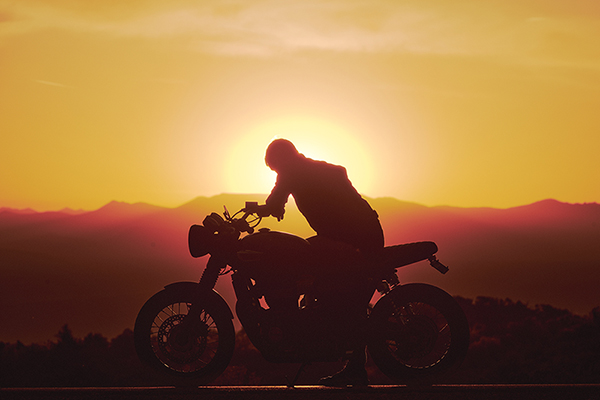
70-200mm (135mm), F9, 1/200 sec., ISO 64
Click image to view larger
Know your riders.
Talk to them and make a connection. Check out their bikes and then watch them ride for a while before you start to take photos so you can see how they take their turns. Every rider has their own idiosyncrasies, so the more you get to know them, the better you’ll be able to photograph them.
Take advantage of your camera’s dynamic range.
Today’s digital cameras are super powerful and come with amazing sensors, which offer terrific dynamic range—that ratio between the darkest darks and brightest whites. Using your histogram will help you tap into that to achieve better photos. When I look at mine, I’m determining ahead of time how I’m going to edit and color to my liking later during post-processing.
To see more of Kevin Pak’s photos, check out his website and Instagram.
More Photo Tips | Watch Videos | Learn More About Tamron Lenses | Photo Gallery
